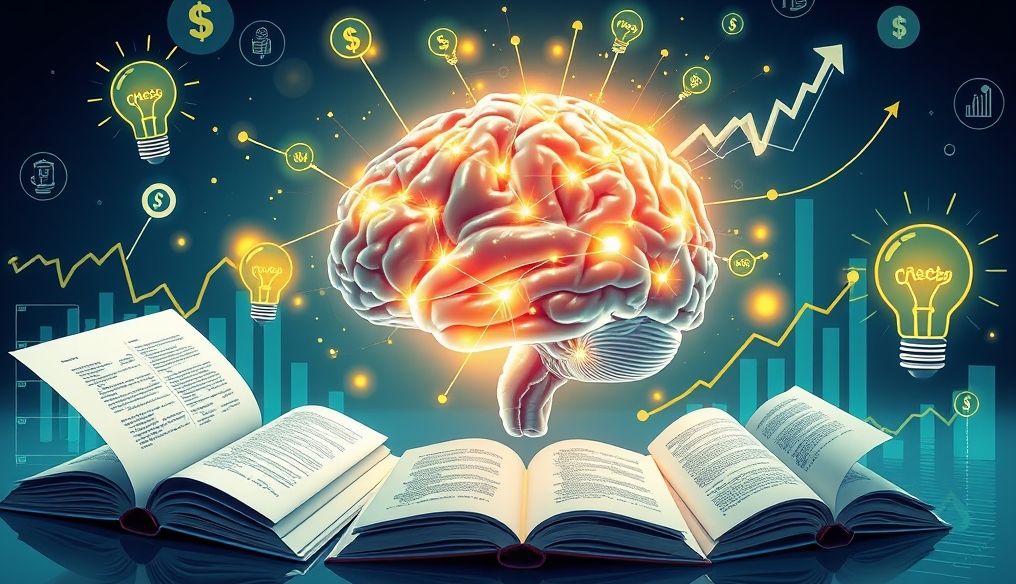Introduction: Rapid Learning - Myth or Reality?
In a world where technological advancements are accelerating and the amount of available information is increasing, rapid learning has become an essential skill for success. It's no longer just about how much information we possess, but about our ability to absorb and apply it effectively. But is rapid learning just a myth, or a real skill that can be acquired and developed?
The answer is yes, rapid learning is a skill that can be acquired, and even mastered through the application of specific strategies and techniques. This article will show you how to transform the learning process into an enjoyable and effective experience, and how to increase your ability to absorb information quickly and efficiently.
Chapter 1: What is Rapid Learning and What are Its Benefits?
Definition of Rapid Learning
Rapid learning is the ability to absorb new information, understand it, remember it, and apply it in less time than usual. It's not just about memorizing information, but about understanding it deeply and connecting it to prior knowledge, making it easier to remember and use in different situations.
Benefits of Rapid Learning
- Increased Productivity: The ability to learn new skills quickly increases your productivity at work and in study.
- Improved Memory: Rapid learning techniques help improve memory and the ability to remember information for longer.
- Increased Self-Confidence: Mastering a new skill quickly boosts self-confidence and encourages continued learning.
- Adaptation to Change: In a rapidly changing world, the ability to learn new skills quickly helps you adapt to changes and keep up with developments.
- Achieving Goals: Rapid learning helps you achieve personal and professional goals faster and more effectively.
Chapter 2: Neuroscience and Learning: How Does the Brain Work?
To understand how to learn quickly, it's important to understand how the brain works. The brain consists of billions of neurons that connect to each other to form neural networks. When we learn something new, new connections are formed between these neurons.
Neuroplasticity
Neuroplasticity is the brain's ability to change its structure and function in response to new experiences. This means that the brain is able to reorganize itself and form new connections between neurons, allowing us to learn new skills and develop our abilities.
The Brain's Memory System
The brain has a complex memory system consisting of several parts, including:
- Sensory Memory: Holds sensory information for a very short time (less than a second).
- Short-Term Memory: Holds information for a short time (about 20-30 seconds).
- Long-Term Memory: Holds information for a long time (from minutes to years).
To transfer information from short-term memory to long-term memory, we must repeat the information and connect it to prior knowledge.
Chapter 3: Effective Rapid Learning Strategies
There are many strategies that can be used to speed up the learning process, including:
1. Define Goals Clearly
Before you start learning, define your goals clearly. What do you want to achieve by learning this skill or this information? Setting goals helps you focus and prioritize.
2. Break Down Information into Small Parts
Instead of trying to learn everything at once, break down the information into small, easy-to-digest parts. This makes the learning process less overwhelming and more effective.
3. Use Memory Techniques
There are many memory techniques that can be used to improve memory, including:
- Spaced Repetition: Reviewing information at spaced intervals.
- Association: Linking new information to prior knowledge.
- Mental Imagery: Creating mental images of information.
- Keywords: Using keywords to remember information.
4. Active Learning
Active learning is a learning style that requires active participation from the learner. Instead of just reading or listening to information, the learner should participate in the learning process by asking questions, discussing, and applying.
5. Use Diverse Sources
Don't rely on a single source of information. Use diverse sources such as books, articles, videos, and training courses. This helps you gain a comprehensive understanding of the subject.
6. Practice and Application
Practice and application are the foundation of rapid learning. After learning the information, apply it in real situations. This helps you fix the information in memory and improve your skills.
Chapter 4: Advanced Techniques for Rapid Learning
1. Pomodoro Technique
The Pomodoro Technique is a time management method based on dividing work into short time periods (usually 25 minutes) called "Pomodoros," separated by short breaks.
2. Mind Maps
Mind maps are a way to organize information visually using diagrams, branches, and keywords. Mind maps help improve memory and understanding.
3. Feynman Technique
The Feynman Technique is a method of simplifying complex concepts by explaining them to someone else in a simple and clear way. This technique helps to identify gaps in your understanding of the subject.
4. Speed Reading
Speed reading is a skill that allows you to read texts faster than usual without losing understanding. There are many techniques that can be used to improve reading speed.
Chapter 5: Nutrition, Rest, and Their Impact on Learning
Physical and mental health play an important role in the learning process. Proper nutrition and adequate rest help improve memory, concentration, and the ability to learn.
Proper Nutrition
Eat healthy foods that contain essential nutrients such as vitamins, minerals, and essential fatty acids. Avoid processed and sugary foods.
Adequate Rest
Get enough sleep (7-8 hours a night). Sleep helps improve memory, concentration, and the ability to learn.
Exercise
Exercise regularly. Exercise helps improve blood flow to the brain and improve memory and concentration.
Chapter 6: Overcoming Rapid Learning Challenges
You may face some challenges when trying to learn a new skill quickly, including:
1. Lack of Motivation
If you are not motivated to learn a new skill, it is difficult to learn it quickly. Try to find ways to increase your motivation, such as setting clear goals or rewarding yourself when you achieve goals.
2. Fear of Failure
Fear of failure can hinder the learning process. Remember that failure is a natural part of the learning process. Learn from your mistakes and keep trying.
3. Distraction
Distraction can hinder concentration and make it difficult to learn information quickly. Try to avoid distractions as much as possible, such as social media and television.
Chapter 7: Practical Applications of Rapid Learning in Daily Life
Rapid learning can be applied in various aspects of daily life, whether in study, work, or personal life.
1. Learning a New Language
Use rapid learning techniques to learn a new language quickly. Start by learning basic words and phrases, then move on to grammar and conversations.
2. Developing Work Skills
Use rapid learning techniques to develop your skills at work. Look for training courses and articles that help you improve your skills.
3. Learning a New Hobby
Use rapid learning techniques to learn a new hobby. Start by learning the basics, then move on to advanced techniques.
Chapter 8: Helpful Tools and Resources for Rapid Learning
There are many tools and resources that can help you learn new skills quickly, including:
1. Learning Apps
There are many learning apps available on smartphones and tablets, such as Duolingo, Memrise, and Quizlet.
2. Online Training Courses
There are many online training courses available on platforms such as Coursera, Udemy, and edX.
3. Books and Articles
There are many books and articles that address the topic of rapid learning. Look for books and articles that suit your interests and level.
4. Blogs and YouTube Channels
There are many blogs and YouTube channels that offer tips and strategies for rapid learning.
Conclusion: Rapid Learning - An Investment in the Future
Rapid learning is not just a skill, it's an investment in the future. The ability to learn new skills quickly opens doors to new opportunities and helps you achieve your goals. Start today applying rapid learning strategies and see how your life changes.




